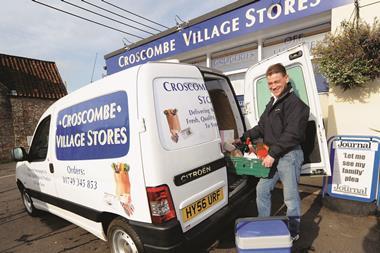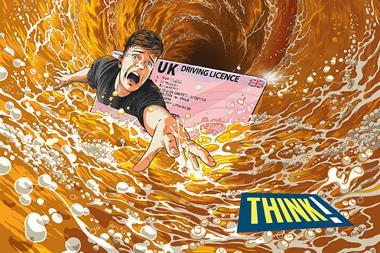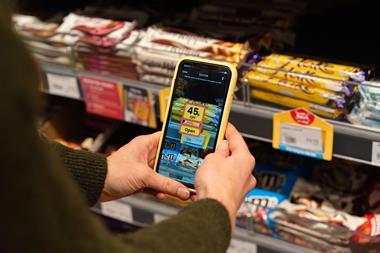Millennials have gone social media crazy and this has done more than simply increase the number of selfies they take. It’s also changed the products they want to buy and the way they want to buy them
Like the term or hate it, or simply don’t understand it, ‘millennial’ shoppers are a big opportunity. Millennials are the last generation of consumers born in the 20th century. The age range that this covers varies depending who you speak to, but it’s generally seen as somewhere between 17 and 34. Many brands are declaring that these are the consumers they are targeting, and there are plenty of reasons why retailers should be, too.
Not only is this age group the next main generation of shoppers, but less than 30% own a car and so they’re likely to do plenty of small trips on foot to their local store. Some 49% live at home with their parents (HIM survey of 16- to 24-year-olds) and even more do not have children, meaning they’re likely to have a fair amount of disposable income.
Jai Singh, at MJ’s Go Local Extra, Sheffield, makes sure to stay in tune with these shoppers. “Millennials are our future,” assert Jai. “It’s important that we engage with them now and make them aware that we cater to their needs and will continue to do so in the future. We know that a lot of younger shoppers refer to our store as ‘our store’ because they’ve grown up using it.
“I find that younger shoppers seem to have a lot more disposable income. I know people are saying we are in hard times with Brexit and so on, but the amount of money people have when between the age of about 12 into their 20s is really quite high. They are given a lot of pocket money by parents and then get jobs and don’t have any responsibilities so are able to spend on treats for themselves.”
The ‘Last of the Millennials’ (16-24 years) have come of age during a time of technological change, globalisation and economic disruption. This unprecedented environment has implanted a different set of experiences and behaviour from previous generations, according to HIM. Its shopper research has shown that 50% of 16- to 24-year-olds wake up with and look at Facebook. What’s more, these shoppers have been found to have a ‘one-click mentality’, meaning they are looking for instant gratification and shareable content, checking their phones up to 43 times a day (SDL 2017).
Jai says social media is key to engaging with these shoppers: “The younger generation think nothing of approaching a company through social media and if they get a personal and sincere response from us they will be really happy with that.”
Jai adds that the one-click mentality has led to shoppers having a shorter attention span. “Five or 10 years ago we might have been able to put an advert on Facebook and people would take the time to read it. Now people are much less likely to do this and you have to post something that will capture their attention quickly and get information across easily through a photo alone.”
According to William Grant and Sons Market Report for 2017, an IWWIWWIWI (I Want What I Want When I Want It) phenomenon has appeared, fuelled by businesses such as Amazon Prime Now, Deliveroo and Uber, which allow consumers to demand increasing levels of convenience, with zero tolerance to a compromise on quality.
Paul Stone, who owns seven stores in Greater Manchester, has noticed this generation wants things to be ultra-convenient and ready to consume immediately. Therefore he sells a range of snacks, alcohol, soft drinks and party items through Deliveroo, which is very popular with the students in his area. He says this is perfect for millennials, which he describes as the ‘blue dot generation’.
“The blue dot generation are the people that, no matter what they need, will open their phone map and look for the blue dot – they are the blue dot and they want everything to come to them.
“If they want pizza then they will look at their phone and see who can bring it to them. Everything is available through their phone. In fact, ironically, they seem to be much more keen to go running around the shops to try to obtain something that doesn’t exist – Pokemon Go characters.”
YOLO (You Only Live Once) and FOMO (Fear Of Missing Out) are life mantras which millennials love to follow. They value experiences over things (HIM 2016). This suggests millennials are more inclined to be won over by an experience-driven PR and sales activity rather than by simple promotions.
Blake Gladman, research and insight director at HIM, says: “From my perspective the key to satisfying millennials is to truly understand what is important to them. They value experience over materialism and therefore it doesn’t become as much as a conversation around price or range or promotions; it’s about whether a retailer can offer the right ‘experience’ that will satisfy these shoppers.
“They are also bombarded with information from every angle and live in a world whereby experiences are shared every second through social media. They would rather spend their money on going out for some food at a cool-looking restaurant than spend it down the pub on a few drinks, so any retailer looking to tap into these shoppers has to understand how to capture their imagination through in-store theatre, displays, unique products and so on – in some way they need to be thinking ‘how can I make my store Instagrammable’.’
Millennial shoppers also want to be seen – through social media, of course – to be buying high-quality and interesting products which look good in a photo on social media and, by extension, make them look good.
This has been noted particularly within the alcohol industry, where premium spirits account for £339m in the off-trade, up 12.7% and growing ahead of the total market.
Jai adds: “It is true that they drink less but better. It’s because of this that we have expanded our ranges of gin, whisky and vodka to include more interesting and more expensive bottles. We are living in a culture where people judge their credibility by how many likes they get on a picture. So people want to be seen consuming high-quality drinks. They will often post a picture showing a product they’ve bought. Sometimes if I see they’ve done that then I might give them a pound off the next time they buy the item because I appreciate the marketing value they have provided.”
Millennials are more likely than any other generation to rely on reviews from others to help them make purchasing decisions. In fact, 56% of millennials choose an outlet based on word-of-mouth reviews and 28% choose their outlets based on what they’ve discovered through social media. Millennials also maintain savvy behaviours as they are 60% more likely than the average consumer to use discount codes or vouchers when eating out (Westons Market Report 2017).
James Brundle, co-owner of the Spar Eat 17 stores, is known for his hip offering which appeals to a younger audience. For him, the defining factors of millennial shoppers are that they are very health conscious and like to know where their food has come from.
“Wherever possible we will provide information on products, where they come from and information about the supplier. We also have a wide range of dairy-alternative products and Free-from products, and interesting craft beers.
“If you get new products in store these shoppers will respond well. When they see our range of products they tell their friends. We definitely think that word of mouth is a big contributor to our success.”
Speaking of where he finds his inspiration, James says: “We listen to our customers and get in anything they request. We keep up with the key trade shows and look at what other successful retailers are stocking. A trip to London will provide plenty of inspiration as this is where a lot of trends start.”
Trends
Ever-changing tastes

Levi Boorer, customer development director at Ferrero, explains how the firm has developed products for these shoppers: “These shoppers are promiscuous, meaning they don’t necessarily have a huge amount of loyalty to any particular brands and they have a desire to see new things all the time.
“It’s important for us, if we want to appeal to this generation, that we demonstrate that we have new and exciting varieties. For example, these shoppers tend to like limited-edition variants such as our dark chocolate Bueno and then our white chocolate coconut Bueno. Also our Tic Tac Mixers provide plenty of fresh new flavours.”
Jai Singh at MJ’s Go Local Extra, Sheffield, says he has found this generation of shoppers open to trying new things. “If they see new flavours or products they will be much more likely to pick them up than perhaps an older shopper who might be more set in their ways.”
Marketing
It’s all about the experience

Speaking of how he gets his inspiration for his ideas, Jai Singh at MJ’s Go Local Extra, Sheffield, says he keeps his eye on what fellow retailers and suppliers are doing.
“I pay attention to how brands market their products to people in this age range; they know what they are doing. They’ve done the market research to know how they can appeal to these shoppers and so I take inspiration from them.”
Many brands have tapped into this trend by hosting one-off experiences for potential consumers. Many brands also recognise the importance of taking part in festivals which are aimed at this generation of shoppers. For example, Carlsberg UK is promoting its Carlsberg Export throughout the summer by bringing its ‘Danish Quarter’ to a range of festivals.
Health food companies, however, tend to look to provide shoppers with more active experiences. Nine Bar recently created an adults’ playground in London Fields, featuring giant swings, see-saws and other fun equipment to boost awareness of how play evokes happiness and well-being.























No comments yet